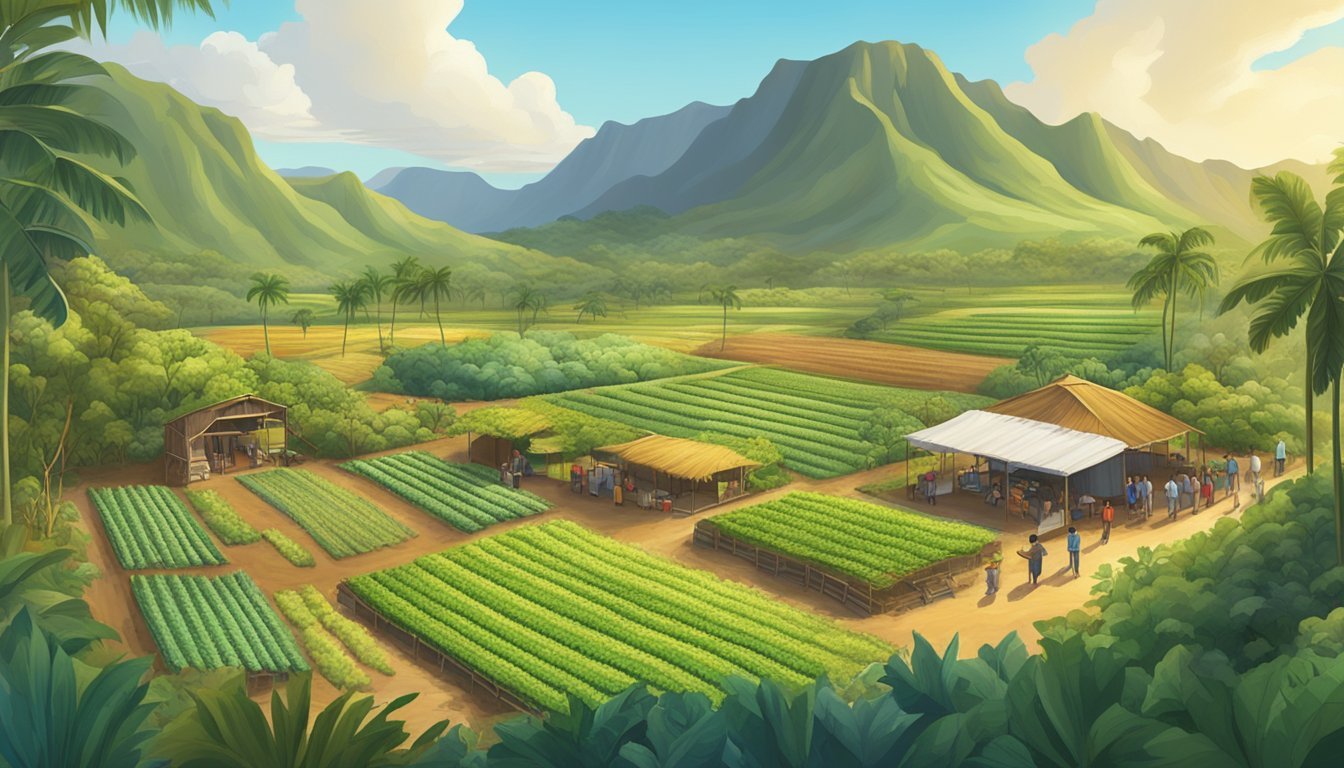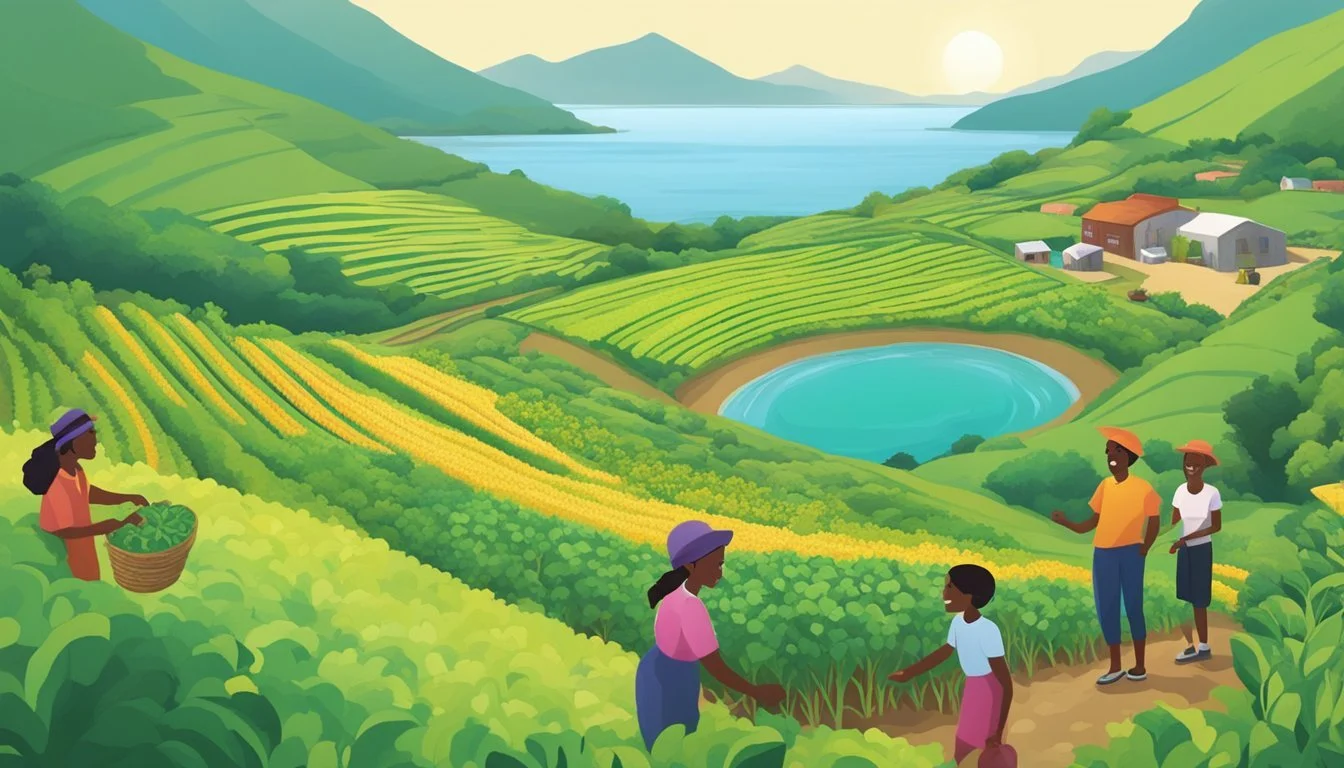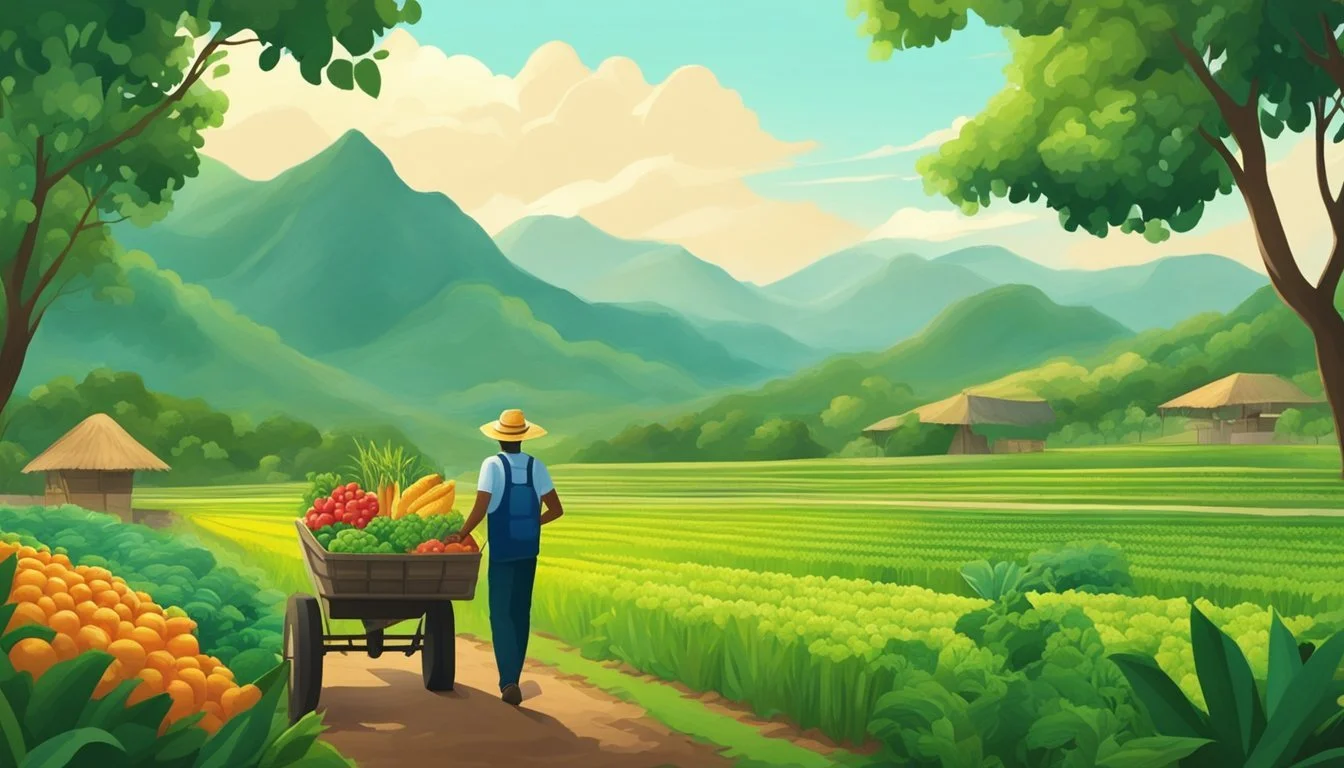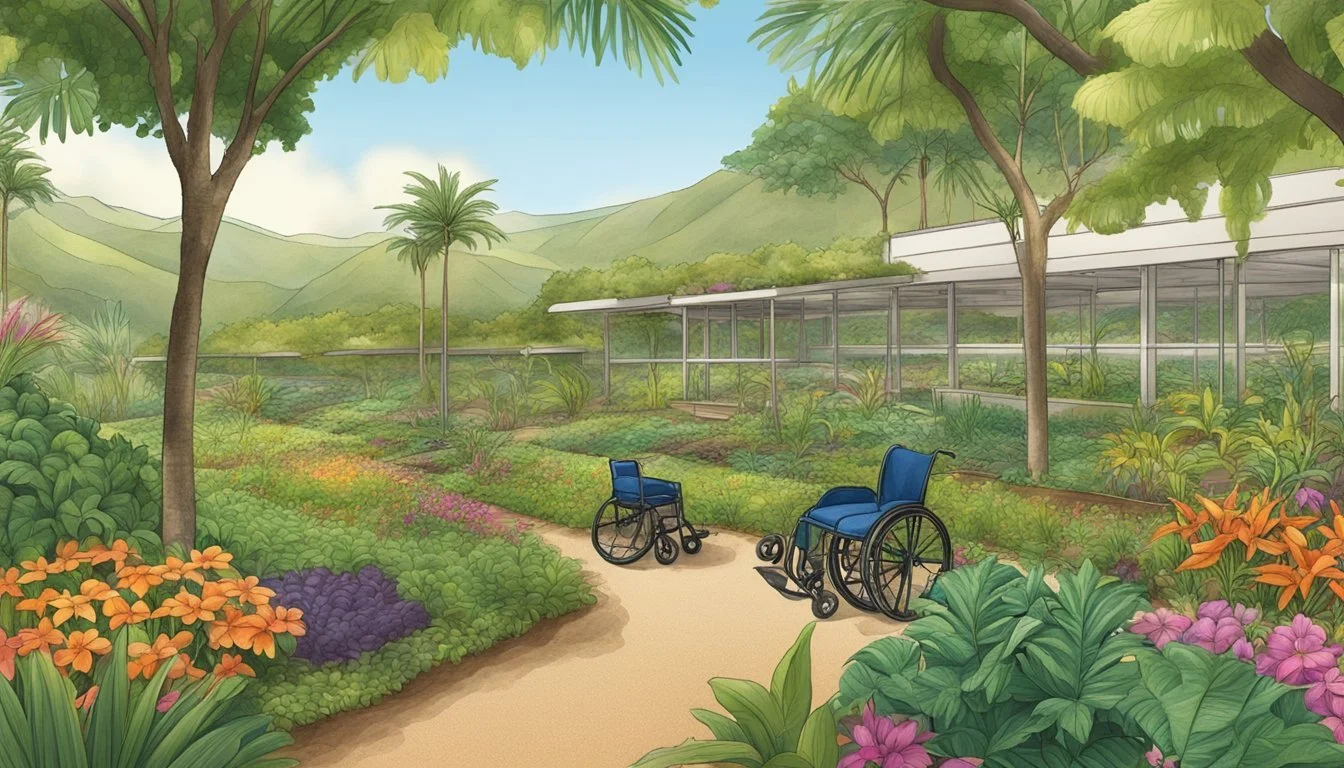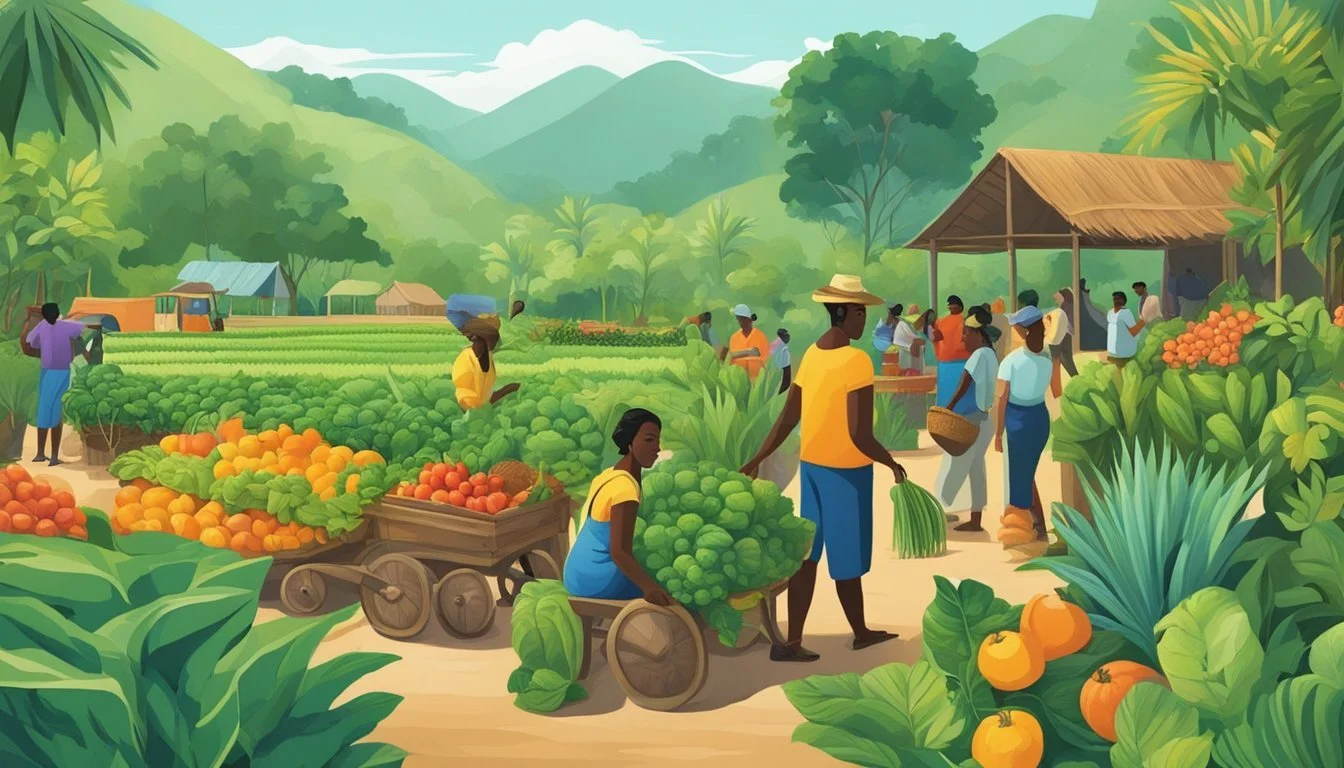Community Supported Agriculture (CSA) in Hawaii
Embracing Local Food Systems
Community Supported Agriculture (CSA) has established a strong foothold in Hawaii, blending the state's rich agricultural heritage with a modern approach to food distribution and farming. This system allows residents to subscribe to the harvest of a local farm or a network of farms, ensuring they receive a weekly or bi-weekly share of fresh, locally grown produce. Through this model, consumers can enjoy the bounty of Hawaii's diverse agricultural offerings, which include a variety of organic vegetables, fruits, herbs, and often additional products like eggs and artisan breads. CSA programs on the islands foster a direct link between farmers and the community, promoting sustainable practices and boosting the local economy.
In Hawaii, the CSA model is more than just a means of procuring fresh produce; it represents a commitment to supporting local agriculture and maintaining the health of the land, known as 'aina in Hawaiian culture. Participating farms often employ sustainable farming techniques that are respectful of Hawaii's unique ecosystems. Consumers benefit from the knowledge that they are eating healthy, fresh foods, while contributing to the preservation of Hawaii's natural resources and the stability of local farms.
The spirit of 'ohana, or family, extends into the CSA framework in Hawaii. Subscribers to a CSA program become a part of the farm's extended family, forming relationships that go beyond the transactional. Many farms offer additional community benefits such as newsletters with farm updates, recipes that highlight the week’s produce, and even home or business delivery options. This connection reinforces the communal aspect of food production and consumption, embodying the true essence of Community Supported Agriculture in the islands.
History and Evolution of CSA in Hawaii
Community Supported Agriculture (CSA) has shaped the landscape of local agriculture in Hawaii by fostering a strong connection between the community and the land, or aina. Through CSA, farmers and consumers experience a symbiotic relationship, ensuring the prosperity and sustainability of the Hawaiian Islands' unique agricultural sector.
Origins of Community Supported Agriculture
The notion of CSA took root in the continental United States in the 1980s, signaling a transformative approach to farming and food consumption. Pioneering this movement were the efforts to link the community with local farms, creating a unique ecosystem of mutual support. Despite the context of decline in small farms nationally, CSA programs have succeeded in establishing their presence robustly.
Growth and Expansion in Hawaiian Islands
In Hawaii, CSA has adapted to the islands' distinct agricultural landscape marked by diverse microclimates and limited land availability. The programs have evolved to include the provision of exotic produce, reflecting local biodiversity, and align with cultural food practices.
Hāmākua Ag Cooperative: Beginning with 20 members and expanding over time, this cooperative exemplifies CSA's adaptability within the islands. With base and deluxe boxes, they cater to various consumer needs and contribute to the local aina by delivering farm-fresh foods to regions like Hilo, Kea'au, and Pahoa.
Hawaii Homegrown Food Network: This organization corroborates the significance of CSA in Hawaii. It is a testament to the flourishing local markets that support not just agriculture but also arts and crafts, thereby validating the expansiveness of CSA into the broader community fabric.
The growth of CSA reflects the islands' commitment to sustainable agriculture and community well-being. The evolution of CSA programs in Hawaii continues to support the aina by embracing unique adaptations in local agriculture, connecting it with community needs, and ensuring the Hawaiian agricultural tradition thrives amid modern challenges.
Benefits of CSA for Hawaiian Communities
In Hawaii, Community Supported Agriculture (CSA) programs provide crucial advantages that resonate deeply with island life and values. These programs ensure that consumers have access to fresh, wholesome produce and play a pivotal role in fostering a sustainable food system while reinforcing the cultural ethos of malama aina, which means to care for the land.
Supporting Local Farmers
CSA initiatives in Hawaii are fundamental in bolstering local farmers, enabling them to secure a reliable market for their produce. By facilitating a direct line of sale from farms to consumers, CSAs sustain farmers' livelihoods and help maintain the agricultural traditions of the islands. Purchasers of CSA shares invest in the success and continuity of local farms, ensuring that they can thrive despite the challenges of modern agriculture.
Promoting Sustainable Agriculture
Sustainable practices are at the heart of Hawaiian CSAs. They often emphasize organic farming techniques that minimize the impact on the land and contribute to greater biodiversity. Participating farms strive to grow food in harmony with the environment, which in turn promotes soil health and conserves water resources. Such practices ensure that agriculture in Hawaii can be sustained over the long term, preserving the islands' natural beauty and resources.
Strengthening Food Security
CSAs play an instrumental role in strengthening food security within Hawaiian communities. By increasing the availability of healthy, accessible food options, CSAs reduce the reliance on imported produce, which can be prone to supply chain disruptions. This localized approach to food distribution ensures that communities have consistent access to nutritious foods, which is particularly vital given Hawaii's geographic isolation.
Community Engagement and Education
Through CSA programs, Hawaiian communities are invited to engage directly with the source of their food. This engagement provides educational opportunities for members to learn about sustainable farming practices and the importance of supporting the local economy. Educational components might include farm visits, workshops, or newsletters that communicate with members about what is being grown and harvested. Community engagement fosters a deeper connection with the food we eat and the land it comes from, encouraging mindful consumption and greater appreciation for Hawaii's agricultural heritage.
How CSA Works in Hawaii
Community Supported Agriculture (CSA) in Hawaii operates through a framework that involves local farmers offering shares of their produce to community members. These shares often entail a subscription service with regular delivery or pick-up arrangements. The CSA models in Hawaii emphasize the importance of sustainable agriculture and strive to support local economies while providing fresh, locally-grown produce to members.
CSA Business Models
The CSA business models in Hawaii vary, with farms offering basic or deluxe boxes that contain an assortment of fresh vegetables and herbs. The models typically run on a subscription-based service, where members can choose the size and frequency of their produce shares. For instance, Big Island Farm Fresh Foods offers a basic box at $20/week and a deluxe box at $40/week. These shares can either be single-farm sourced or consolidated from multiple local farms.
Membership and Subscription Services
Membership in a Hawaiian CSA can either be on a seasonal basis or year-round, with an emphasis on providing food for all through various programs such as sliding scale pricing. Subscribers can support local agriculture and receive a diversity of produce ranging from 7-10 types of vegetables and herbs. CSA farms may also incorporate a food for all program, making fresh food accessible to a broader range of community members.
Distribution and Delivery Methods
CSAs in Hawaii typically distribute their produce through a combination of home delivery and local pick-up spots. Farms like Ohia Fields Farm offer year-round home delivery, which covers a wide area, including the Hamakua Coast and Kailua-Kona. Other CSAs, such as Malama Da Farmer's DA BOX CSA, provide island-wide distribution that ensures fresh produce is affordable and supports the viability of small farms. Continual provision throughout the season is maintained, connecting consumers directly with the source of their food.
CSA Farms and Offerings
Community Supported Agriculture (CSA) in Hawaii offers diverse produce and specialty options through a model that supports local farmers and sustainable practices. Members receive fresh, seasonal produce, reflecting the rich volcanic soils and unique climate of the islands.
Diversity of Produce
Hawaiian CSA farms frequently provide a colorful array of fruits, vegetables, and herbs. Participants may find tropical fruits like papayas and bananas alongside leafy greens, root vegetables, and aromatic herbs in their weekly deliveries. Farms on the Big Island and areas like Kona are known to cultivate a vast selection of crops, taking advantage of the region's diverse microclimates.
Organic and Non-GMO Options
Several CSA farms in Hawaii are certified organic operations, ensuring they grow food without the use of synthetic pesticides or genetically modified organisms (GMOs). These farms emphasize eco-friendly methods and non-GMO seeds to produce high-quality, nutritious food. Consumers focused on organic practices can find CSAs that align with their preferences for clean, wholesome produce.
Specialty Products and Add-ons
Beyond fresh produce, many CSA programs offer add-ons such as eggs, flowers, or additional plants to enhance their members’ experience. These products are typically sourced from the farms themselves or neighboring cooperatives, facilitating a deeper connection between consumers and local food systems. Some CSAs might also include tropical specialties such as Kona coffee beans or unique Hawaiian varieties of vegetables and fruits, providing an authentic taste of the islands.
CSA Locations and Accessibility
Community Supported Agriculture (CSA) programs in Hawaii offer diverse points of access for residents and visitors to supply themselves with fresh, locally-sourced products. By engaging directly with farmers through CSAs, individuals support local agriculture and gain access to nutritious foods across various locations throughout the islands.
Main CSA Hubs in Hawaii
Hawaii's main CSA hubs are concentrated around Oahu, Kailua-Kona, Waimea, and Honaunau, providing a structured avenue for communities to procure fresh, locally grown produce. Oahu, the most populous island, boasts initiatives like Oahu Fresh, which connects consumers with local farmers. In Kailua-Kona and Waimea, known also as Kamuela, CSA operations serve as important food sources, establishing a direct link between farmers' harvests and consumers' tables.
Rural and Urban Reach
Food hubs in both rural and urban settings play a crucial role in the CSA ecosystem. They facilitate distribution networks that bridge the gap between rural production areas and urban consumers. On the island of Oahu, both urban dwellers and rural communities have the opportunity to participate in CSA programs, ensuring a broad reach that encompasses various lifestyle needs from the bustling city to more secluded areas.
Accessibility Initiatives
Efforts to make CSAs more accessible are evident through flexible pick-up locations and delivery service options. CSA programs commonly offer a selection of pick-up sites, including at farms, markets, and other community spaces. In Waikoloa, customers may have the option to collect their share at a designated spot or choose home delivery, enhancing the accessibility for those with limited transport options. By adapting to the geographical and logistical needs of their members, CSAs ensure that fresh, locally grown food is more obtainable for a wider segment of Hawaii's population.
Impact of COVID-19 on CSA Programs
The COVID-19 pandemic radically altered the operations of Community Supported Agriculture (CSA) in Hawaii, driving shifts in consumer demand, necessitating a range of adaptation strategies by CSA providers, and underscoring the pivotal role that CSAs played in distributing healthy food during a period of crisis.
Shifts in Consumer Demand
During the pandemic, consumers in Hawaii turned to CSAs in greater numbers, seeking out fresh and locally sourced food. Maureen Datta, operator of Adaptations Inc, witnessed an upsurge in enrollments for their Fresh Feast CSA services. This shift was a direct response to interrupted supply lines and the increased consumer priority on health and safety.
Adaptation Strategies
In response to COVID-19, CSA providers in Hawaii had to rapidly adapt, implementing new health protocols and contactless distribution methods. They enhanced their online presence, offering digital ordering and customer service to ensure continued access to fresh produce. Many programs also expanded their product range to meet the broader needs of customers staying at home.
CSA's Role During Pandemic
CSAs became a critical service during the pandemic, bridging the gap caused by disruptions in the larger food supply chain. By focusing on local produce, CSA programs in Hawaii provided communities with a reliable source of healthy food when traditional retail outlets faced shortages. They also played a crucial role in supporting local agriculture at a time when many sectors faced economic hardships.
Marketing and Outreach for CSA
Effective marketing and outreach are pivotal for the success of Community Supported Agriculture (CSA) in Hawaii. They focus on building strong relationships with the community and leveraging various platforms to enhance visibility and encourage local food consumption.
Online Presence and Social Media
A robust online presence and active use of social media platforms are critical for CSA outreach. Utilizing Instagram and Facebook helps farms to showcase their fresh produce, share updates, and connect with potential shareholders. For example, farms can post images of their farm-fresh foods, emphasizing the variety and quality that CSA members can expect. Engaging content such as family stories from the farm or updates from the HAF Ag Park strengthens community ties.
Instagram: Highlighting weekly harvest and member testimonials.
Facebook: Sharing event announcements and educational content.
Email newsletters serve as a direct line of communication, providing current and potential CSA members with news, subscription information, and pickup reminders.
Community Events and Farmer’s Markets
CSAs can increase their visibility by participating in Community Events and setting up booths at local Farmers' Markets. These venues allow farmers to interact with the community, answer questions, and sign up new members. CSA programs like those on Hawaii Island, which start with a core group of members and expand over time, benefit from these personal engagements. Informational pamphlets and face-to-face conversations can lead to higher conversion rates of market-goers to CSA subscribers.
Participation example: Offering a tasting of CSA box contents at a Farmers' Market.
Display: Showcasing signup sheets and brochures at a local Community Event.
Educational Tours and Workshops
CSAs often host Educational Tours and Workshops to deepen the understanding and appreciation of sustainable agriculture among Hawaii’s residents and visitors. The Hāmākua Ag Cooperative can provide real-world examples by inviting people to learn directly from the land. Mobile Markets or Farm Tours can be advertised through a CSA’s website and social media channels, creating opportunities for individuals and families to engage with their food sources.
Workshop: Discussing sustainable practices used on the farm.
Tour: A guided visit through the growing fields and facilities.
Through hands-on learning, CSA members and the broader community can see the value of supporting local agriculture, strengthening the bond between producers and consumers.
Challenges and Considerations for CSA
Community Supported Agriculture (CSA) in Hawaii faces unique challenges that need addressing to ensure its sustainability. These range from logistical issues to ensuring economic viability and navigating the constraints of seasonal production.
Logistical Challenges
Localharvest and market managers in Hawaii grapple with the complexity of distributing veggies and other products from local farms across the islands. CSA models must contend with geographical fragmentation, notably for members on Molokai or in South Kohala, where remoteness can mean higher transportation costs and longer transit times, potentially affecting freshness upon delivery.
Economic Viability
For CSA to remain economically viable, there must be a balance between consumer demands, farmers' production capacities, and fair pricing structures. Farmers markets often provide a direct channel for local farms to sell produce, yet CSAs must compete with these and other retailers. They also need to ensure enough subscribers to cover production without oversaturating the market.
Seasonal Limitations
Hawaii's CSA operations must adapt to seasonal fluctuations, determining which veggies and crops can be grown and distributed at different times of the year. This requires careful planning to maintain a diverse and sufficient supply. The season not only impacts availability but also variety, which is a key expectation of CSA members seeking more than what is typically available at supermarkets.
Future of CSA in Hawaii
As community supported agriculture (CSA) programs evolve in Hawaii, they are set to leverage technological advances, cater to a growing consumer base, and uphold sustainability goals.
Technological Innovations
Technological advancements are integral in supporting the expansion of CSA models in Hawaii. Producers are expected to adopt more sophisticated software for managing subscriptions and deliveries, ensuring that the process from local farms to consumers becomes more efficient. In addition, online platforms for CSAs are likely to be updated regularly to provide real-time updates about crop availability, which fosters a direct connection between consumers and the source of their food.
Expanding Consumer Base
The consumer base for CSA programs in Hawaii is poised to increase. A key factor in this expansion is the growing interest in eating local and organic produce, which aligns with the desire to buy local and support the community. CSA programs may also see an increase in partnerships with businesses, such as those seen with Hawaiian Electric Company and First Hawaiian Bank employees, helping to donate and support Oʻahu farmers while promoting healthy lifestyles among their staff.
Sustainability and Long-Term Goals
Lastly, CSA in Hawaii is geared towards achieving long-term sustainability goals. The focus is on maintaining and scaling up sustainable practices which include the prioritization of organic farming methods. CSA programs are positioned to play a significant role in Hawaii's food security by reducing dependence on imported goods and supporting a self-sufficient food landscape. Initiatives to educate the community on sustainable living through CSA are inevitable as the programs continue to grow and foster a sustainable cycle of production and consumption.


